Antarctica, the frozen continent at the southernmost tip of our planet, has long been a destination of mystery and intrigue. In recent years, a new form of exploration has emerged – luxury Antarctica cruises. These extraordinary journeys offer travelers an unprecedented opportunity to experience the stark, icy beauty of Antarctica while enjoying the pinnacle of comfort and service.
We will delve into the world of best cruises to Antarctica, examining what sets them apart from less expensive Antarctica cruises, why they are a testament to opulence, and why they have captured the imaginations of adventurous souls worldwide.
Luxury Antarctica cruises stand apart from traditional forms of exploration by providing an unmatched level of comfort and extravagance in one of the most remote and inhospitable environments on Earth. They offer an experience that marries the thrill of discovery with the pleasures of refined living.
One of the defining features of luxury Antarctica cruises is the exceptional quality of the accommodations. Passengers on these voyages are treated to spacious, elegantly appointed cabins or suites, many of which offer breathtaking panoramic views of the surrounding landscape. These cabins often come equipped with plush furnishings, en-suite bathrooms, and all the amenities one would expect in a high-end hotel.
The dining experience on luxury Antarctica cruises is equally remarkable. Passengers can savor gourmet cuisine prepared by world-class chefs, with menus featuring locally sourced ingredients and culinary delights that rival those of renowned restaurants. Dining rooms are typically designed to offer panoramic views of the surrounding icy landscape, enhancing the ambiance of each meal.
Luxury Antarctica cruises are not just about breathtaking views and sumptuous meals; they also offer a range of amenities and services that cater to the desires of discerning travelers. These amenities can include onboard spas, fitness centers, observation lounges, and even libraries filled with books on polar exploration.
Wellness facilities are an essential feature of luxury cruises to Antarctica. Travelers can unwind in luxurious spas, enjoying massages and treatments designed to rejuvenate the body and soul. Fitness centers equipped with state-of-the-art equipment cater to those who wish to maintain their exercise routines while surrounded by the frozen expanse of Antarctica.
One of the highlights of luxury Antarctica cruises is the opportunity for passengers to interact with experts in various fields. These cruises often feature a team of naturalists, scientists, and historians who offer informative lectures and lead guided excursions. Passengers can learn about the region’s unique ecosystems, geology, and history, adding depth and context to their exploration.
Luxury Antarctica cruises typically operate on smaller vessels, which enhances the intimacy and exclusivity of the journey. With fewer passengers on board, travelers can expect more personalized attention from the crew, creating an atmosphere of warmth and camaraderie.
The smaller ship size also allows for greater flexibility in navigating the icy waters and accessing remote landing sites. This means that passengers on luxury Antarctica cruises often have the privilege of exploring pristine areas that larger vessels cannot reach, providing a deeper connection to the untouched wilderness.
In recent years, luxury Antarctica cruises have evolved to include environmentally conscious practices. Many cruise operators are committed to minimizing their impact on this fragile ecosystem. Modern luxury vessels are equipped with advanced technology to reduce emissions and employ sustainable waste management practices.
Some cruise lines have even partnered with environmental organizations and researchers to support conservation efforts in Antarctica. This commitment to preserving the pristine wilderness of Antarctica aligns with the growing awareness of the need to protect our planet’s most delicate ecosystems.
The allure of luxury Antarctica cruises lies in their ability to offer travelers an unparalleled adventure in comfort and style. The chance to witness the majesty of Antarctica’s towering icebergs, observe its unique wildlife, and explore its desolate, snow-covered landscapes is a once-in-a-lifetime experience. Luxury Antarctica cruises provide the perfect backdrop for such an adventure, ensuring that every moment is marked by comfort and luxury.
Luxury Antarctica cruises represent a harmonious fusion of adventure and opulence. They offer an exclusive opportunity to explore one of the world’s last great frontiers while enjoying the comforts and amenities of a 5-star hotel. From lavish accommodations and gourmet dining to wellness facilities and expert-guided excursions, these cruises cater to the desires of discerning travelers who seek an extraordinary journey.
As travelers increasingly seek meaningful and immersive experiences, luxury Antarctica cruises continue to gain popularity. They are a testament to the indomitable human spirit and the desire to explore the farthest reaches of our planet, all while indulging in the finest luxuries that modern travel has to offer. In an era when luxury is often synonymous with excess, luxury Antarctica cruises remind us that true luxury lies in the rare and authentic experiences that money cannot buy.
When most people think of penguins, they think of those cute little tuxedo birds that live in the coldest places on Earth. However, there is so much more to learn about these fascinating creatures! Interested in seeing penguins? Consider a cruise to Antarctica!
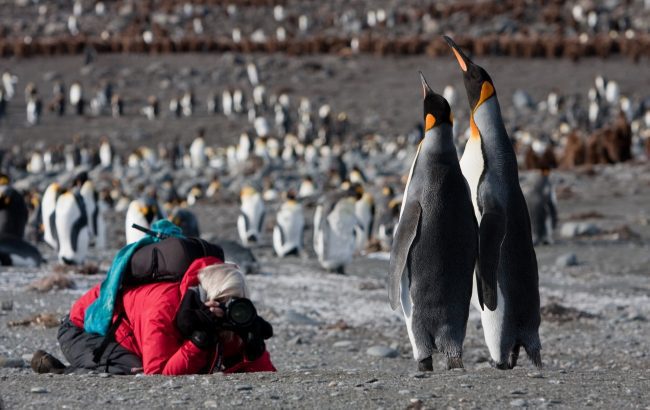
Penguins are members of the family Spheniscidae, and are mainly found in the Southern Hemisphere. They have adapted to an aquatic lifestyle and therefore cannot fly. Some species can reach speeds of up to 15 mph by ‘tobogganing’ on their bellies across the ice or water whilst others can dive to a depth of up to 550 meters. Penguins have extremely dense and waterproof plumage that traps air against their body and in turn, insulates them from the cold. They also have webbed feet and flippers for swimming, with some species able to stay underwater for around 18 minutes at a time! Penguins feed mainly on fish, squid, krill, and other crustaceans.
Penguins use their wings for balance whilst swimming, rather than for flying. They are very social creatures and live in large colonies called rookeries which can be anything from a few pairs to hundreds of thousands of birds! Penguins have also been known to ‘toboggan’ down snowy slopes for fun, and even catch a ride on the back of whales. Penguins are truly remarkable birds in their own right and are an incredible sight to behold!
Penguins are mainly found in the Southern Hemisphere, and some species breed as far south as Antarctica. The largest concentrations of penguins exist along the coasts of Argentina, Chile, South Africa, Australia and New Zealand. Penguins prefer cold climates and have to migrate when the water gets too warm with some migrating over 1000 miles per year. Penguins are very hardy creatures and so they are able to withstand the harsh conditions found in Antarctica, such as freezing temperatures and snow storms. They can even survive being frozen in ice!
Penguins play a vital role in the Antarctic ecosystem by keeping their population of small fish and krill in check. Penguins also provide a food source for larger predators such as seals and killer whales. Unfortunately, some species of penguins are endangered due to climate change, overfishing, and other human activities. It is important that we work hard to protect these incredible creatures and the environment they inhabit.
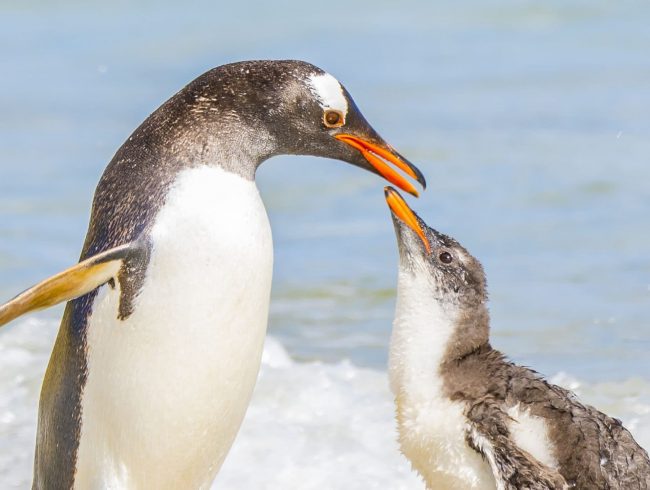
Penguins feed mainly on small fish such as anchovies, sardines, and krill, as well as squid and other crustaceans. Depending on the species, penguins may dive up to 550 meters deep in search of food. They have special adaptations that allow them to survive the cold water temperatures and find their prey using their excellent eyesight and hearing.
Penguins also rely on their powerful flippers to swim and maneuver through the water. Penguins are able to swim up to 17 miles per hour and can dive depths of hundreds of feet when hunting for food. Their flippers are also used as a rudder, helping them to quickly change directions in pursuit of prey.
Their strong beaks help them catch and eat food. They also have a specialized digestive system that helps them to extract the most nutrients from their meals.
Gentoo penguins are the fastest swimming penguin species, reaching speeds of up to 36 kph (22mph). This is thanks to their long and powerful flippers that act like oars in the water. They also have webbed feet which help them propel through the water at even greater speed. Gentoo penguins breed along the coasts of Antarctica, the Falkland Islands, and South Georgia.
Emperor penguins are the largest and most well-known penguin species. They can reach up to 115cm (45in) in height, making them almost twice as tall as other species! Emperor penguins inhabit the Antarctic ice shelf, where they breed during the long winter months.
Emperors feed mainly on fish, squid and krill like other penguin species. They have remarkable adaptations that allow them to survive in these harsh conditions, including a thick layer of blubber and an insulating coat of feathers. Emperor penguins also have unique vocalizations that can be heard over great distances and are used to communicate with other members of the colony.
Emperor penguins have also adapted to breeding in the extreme cold. They will huddle together during the winter months, forming tight circles to conserve heat and protect their chicks from predators. They are also able to fast for long periods of time, which allows them to survive when food is scarce.
Unfortunately, Emperor penguins face many threats, not just from predators. As the Antarctic ice shelf melts, their breeding grounds are becoming increasingly difficult to access. It is therefore vital that we protect these remarkable creatures by reducing our impact on their habitats.
Emperor penguins are an amazing species that have adapted perfectly to life in the Antarctic. They are an iconic symbol of the Southern Hemisphere and must be protected for future generations to enjoy. You can see Emperor penguins on specific Antarctica cruises! Learn more here.
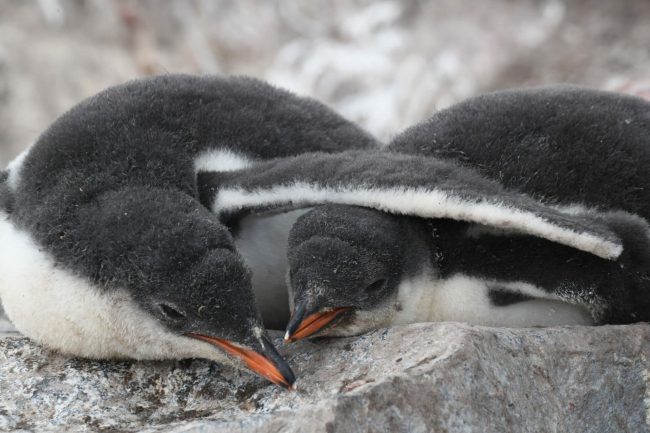
Penguins have a unique adaptation that allows them to survive in cold water – their feathers. Penguins are covered in thousands of small, tightly packed feathers that overlap like shingles on a roof. These feathers form an insulating layer that traps air close to the penguin’s body and keeps it warm.
Penguin feathers are also designed to be waterproof. Each feather has a waxy coating that prevents water from penetrating the layer of insulation. This allows penguins to swim without becoming too wet or cold, even in icy waters.
Penguins must preen their feathers regularly in order to retain their insulating properties. They use special oils from their preen glands to waterproof and condition the feathers. This helps to maintain a good seal between the feathers so that no water can get through.
Penguin feathers are also designed for speed in the water. Each feather is shaped like an airfoil, which reduces drag and allows them to move quickly through the water. Penguins can reach speeds of up to 20mph (32km/h) when they are hunting for food.
Penguins are known for their monogamous relationships, but interestingly there are some same-sex couples among them. These same-sex pairs are usually male but have been observed in both female and mixed-gender colonies as well.
Same-sex penguin couples form strong bonds and often exhibit behaviors that are similar to heterosexual breeding pairs. They build nests together, take care of eggs and chicks, and even share parenting duties.
Biologists believe these couplings are likely due to a shortage of potential mates of the opposite gender, or they may simply prefer the same gender. Whatever the reason may be, these same-sex couples are an important part of the penguin community and demonstrate the incredible diversity found in the animal kingdom.
Overall, Emperor penguins are fascinating creatures that display a variety of behaviors and adaptations. They have successfully adapted to life in both land and water, with their unique design allowing them to survive in extreme environments. From their remarkable vocalizations to their same-sex couples, these incredible creatures will continue to amaze us for many years to come.
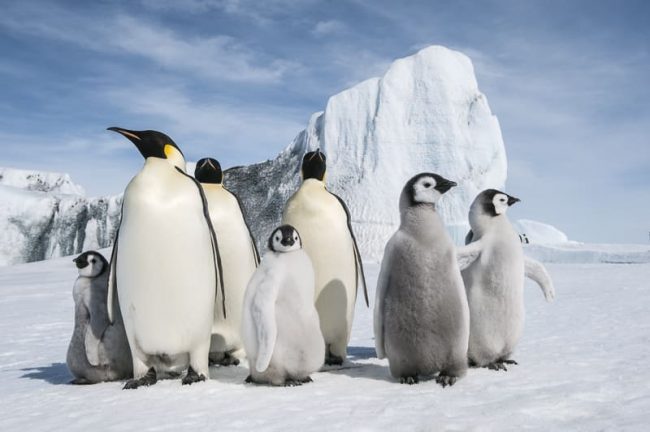
Male emperor penguins have a unique behavior that allows them to help their partners and their offspring in the extreme cold of Antarctica – they incubate their eggs while the female goes off to hunt. During breeding season, male emperor penguins will form a tight huddle around their egg for weeks at a time. The males will take turns standing on the egg and rotate positions every few hours. This ensures that the egg is kept warm and safe from predators.
The female emperor penguins will go off to hunt during this time and can be gone for days at a time, sometimes even weeks. When she returns, the male will relinquish his position and feed her before she takes over incubating duties. This unique behavior allows both the male and female emperor penguins to survive in the frigid Antarctic climate.
The deepest dive ever made by a penguin was more than 6,000 feet underwater. This impressive feat was recorded in 2013 by an Emperor Penguin who dove to this incredible depth in search of food.
This remarkable dive demonstrates the strength and agility of these amazing birds. Penguins use their powerful wings to propel themselves through the water when diving and have been recorded swimming up to 17 miles per hour. They also have strong eyesight that allows them to spot potential prey from a distance.
Penguins must be able to dive deep in order to access food sources, as some of their favorite foods are located too far below the surface for them to reach by simply swimming. Penguins have been observed eating fish, crabs, squid and more.
The incredible diving abilities of emperor penguins make them truly remarkable creatures. With proper protection, we can ensure that these amazing birds will continue to thrive in the wild for many years to come.
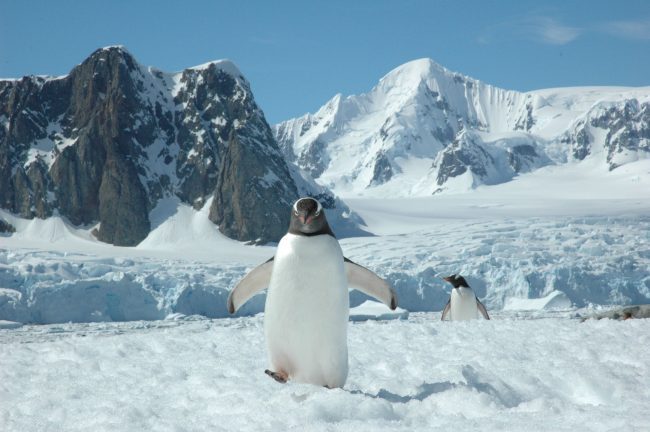
Emperor penguins stay warm in the extreme cold of Antarctica by keeping themselves as cold as possible. By doing this, they are able to conserve energy and reduce their metabolic rate. This helps them to survive even in frigid temperatures.
The emperor penguin has a number of adaptations that can help it stay warm while swimming or standing still. For example, their waterproof feathers contain a layer of air that helps to insulate them and trap body heat. Additionally, they have a thick layer of blubber beneath the skin and can even huddle together in large groups to share body heat.
Their eyes are also adapted to the conditions of Antarctica by having extra blood vessels to help keep them warm. When the emperor penguin dives underwater, its eyes are protected by a thin layer of clear oil that helps it to see clearly while keeping them from freezing.
Penguins living in warmer climates have also adapted to their environment and have developed clever ways of cooling down. To help regulate their body temperature, some species use a process called ‘gular fluttering’. This involves rapidly vibrating their throat muscles which helps to evaporate water from the bird’s mouth and nasal passages. This process cools and moistens the air they breathe, helping them beat the heat.
Other penguin species may also use water to help keep cool. They will stand in shallow pools of water or lie down on wet rocks during warm days, which helps to absorb some of their excess body heat. Additionally, some penguins have been observed using the shade of boulders or other objects to reduce exposure to direct sunlight and escape the heat.
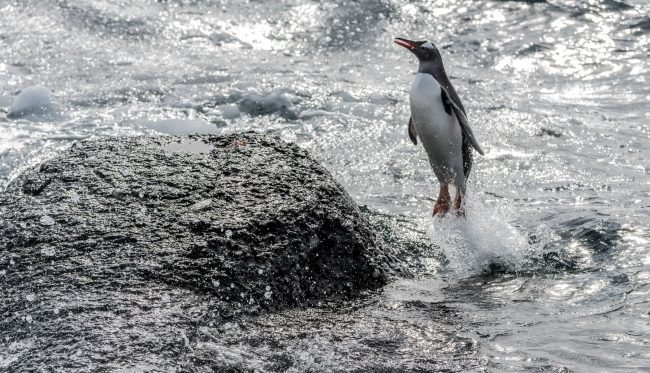
Although penguins cannot fly, they do have the ability to become airborne. Penguins use their wings to ‘fly’ underwater while swimming and can also leap out of the water into the air.
Penguins have been observed leaping as high as nine feet out of the water in order to catch prey or escape predators. As they jump into the air, their wings create enough lift and thrust to propel them upwards.
The penguin’s wings are also adapted for swimming underwater. They have webbed feet that act like paddles, helping the penguins to quickly move through the water. Additionally, their wings can be used as a rudder to help them quickly change directions while swimming.
Penguins are incredible creatures that have adapted to their environment in order to survive. Through their remarkable diving and leaping ability, they can easily find food and evade predators in the icy waters of Antarctica. Their ingenuity and resilience is truly awe-inspiring. Interested in seeing penguins in person? Book an Antarctic cruise!
Unfortunately, five species of penguins are currently listed as endangered. These include the African Penguin, the Galapagos Penguin, the Yellow-Eyed Penguin, the Northern Rockhopper Penguin and the Southern Rockhopper Penguin.
The main threats that these species face are loss of habitat due to human activities such as fishing, pollution and climate change. As above-water temperatures rise, their habitats become increasingly inhospitable for these species to thrive in.
In an effort to conserve these species, many organizations are taking action to protect the remaining populations. These efforts include setting up protected areas, monitoring fishing activities and introducing rehabilitation programs that provide medical care and food sources for penguin populations.
The rarest kind of penguin today is the Erect-Crested Penguin, which can be found in the Subantarctic regions of New Zealand and Chile.
Unfortunately, their populations have been declining rapidly over the years due to environmental hazards such as oil spills, fishing activities, and climate change. It is estimated that there are less than 4,000 of these species remaining in the wild today.
In order to conserve these king penguins and help boost their population, a number of conservation efforts have been put into place. These include setting up protected areas for nesting sites, monitoring fishing activities in the waters around them, and educating local communities about the importance of conservation.
By working together, we can ensure that these rare penguins are protected and their population numbers start to increase in the future.
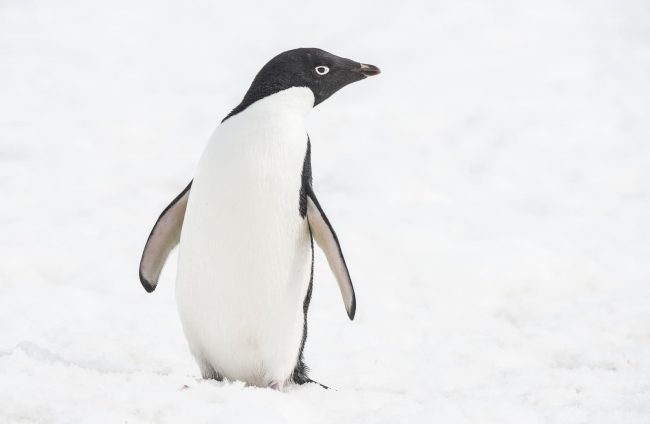
Penguins have been around for millions of years and the world’s oldest penguin fossil dates back 61 million years. This ancient species, named Waimanu Mannering, was discovered in New Zealand and is believed to be the earliest known ancestor of modern-day penguins. This ancient species is believed to be the earliest known ancestor of modern day Adelie penguins.
These ancient penguins were much larger than their modern-day counterparts, reaching up to 1.5 meters in height. They are thought to have fed mainly on small fish and squid, and used their wings for swimming instead of flying, similar to modern penguin species!
The discovery of this ancient species has provided us with valuable insights into the evolution of penguins and a better understanding of how these creatures have adapted to survive in their environment for such a long period of time. We can use the knowledge we’ve gained from this discovery to help protect and conserve modern-day species of penguins so that they too can thrive for millions of years.
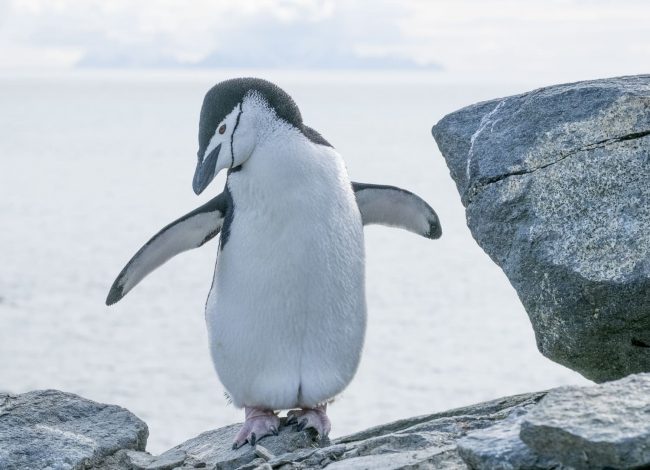
Penguins are an amazing species that have been around for millions of years. Unfortunately, their populations have been declining rapidly over the years due to environmental hazards such as oil spills, fishing activities, and climate change. Please consider donating to charities focused on penguin conservation!
Global Penguin Society in the United States and Argentina
The Penguin Foundation in Australia
The West Coast Penguin Trust in New Zealand
The Southern African Foundation For The Conservation Of Coastal Birds in South Africa
There are many more organizations focused on penguin conservancy that would greatly benefit from donations, please help conserve these incredible birds!
The name “Antarctica” comes from the Greek language, and stems from the phrase “opposite of the Arctic.” This definition isn’t very helpful until you find out what “Arctic” means, which equates to “of the bear.” Thus, “the Antarctic” means “the land opposite of the bear”, which is true! In the Arctic, there are polar bears, while in the Antarctic, there are no polar bears. But that’s not why the term came about.
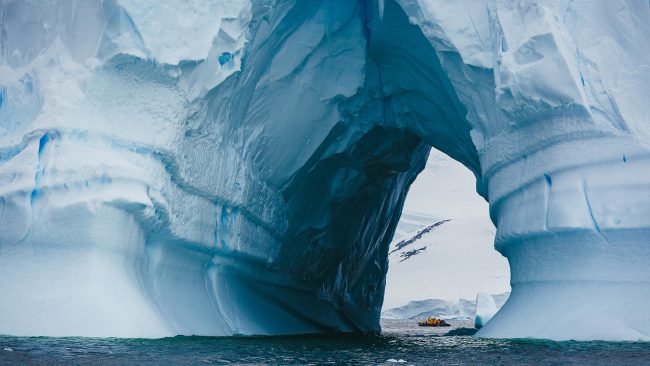
In the northern part of the sky, there is the constellation Ursa Minor, the Little Bear. This constellation contains the Polar Star and marks the North Pole. Antarctica then names the place opposite of the Little Bear, the South Pole. The “Ant” part is the same root as “Anti-,” so you can remember it as being the anti-arctic if that helps.
Temperatures in Antarctica are known as some of the coldest in the world, with the famous Antarctica weather, adding constant bitter and icy winds. On average, temperatures in Antarctica can reach around -60°C, while temperatures in the Artic average about -40°C.
Before the continent of Antarctica took its name, there were some places with the same name far south, such as the French colony of France, Antarctique, in the 16th century. Only in the 1890s did the Scottish cartographer, John Bartholomew, name the frozen continent officially. Though, it had been discovered decades earlier.
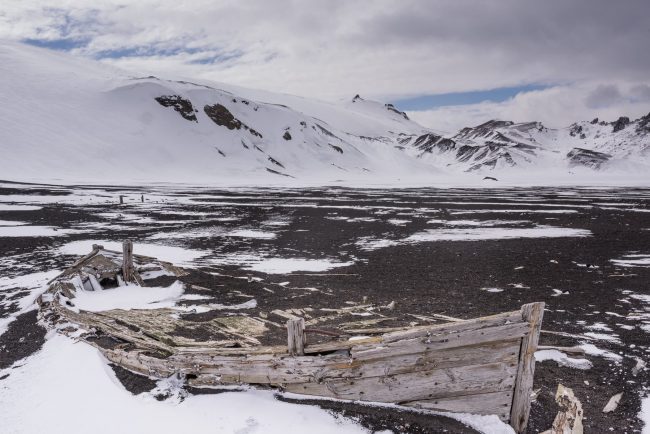
In fact, people thought there must be an equivalent area to the Arctic on the South Pole as early as the 2nd century AD. They theorized it was a vast continent, called Terra Australis, which they proved to be true after sailing the Cape of Good Hope and Cape Horn by the 16th century. They deduced that it was indeed a continent as it was surrounded completely by the sea, and not connected to any other land. Some people even believed it may be populated.
You may be wondering if now, all this time later, are there people living on Antarctica? There is a small Antarctica population, mainly researchers, but nothing close to cities or towns.
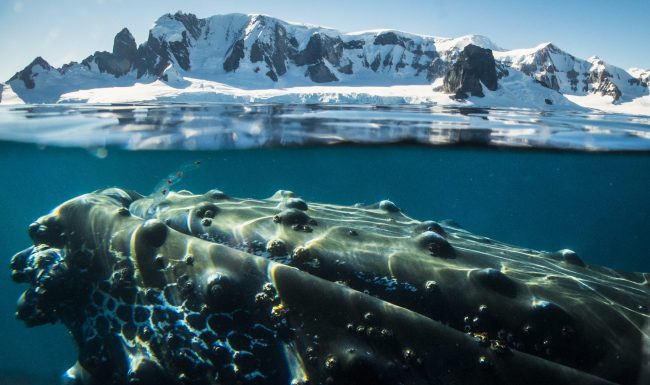
The Antarctic refers to the larger polar region surrounding the South Pole. This includes not only Antarctica, but also a series of island territories on the Antarctic Plate. The area roughly encompasses the 60th Parallel South and covers approximately 20 percent of the Southern Hemisphere.
Antarctica is the continent that takes up most of the Antarctic region and is the 5th largest continent by land mass in the world. 98% of its surface is covered with an ice sheet with an average thickness of 1.2 miles (1.9 km). This is surrounded by the Antarctic Convergence, where the north-flowing Antarctic waters encounter the warmer waters of the Atlantic and Pacific oceans above. Seven nations have staked claims to different parts of the continent, including Argentina, Australia, Chile, France, New Zealand, Norway, and the United Kingdom.
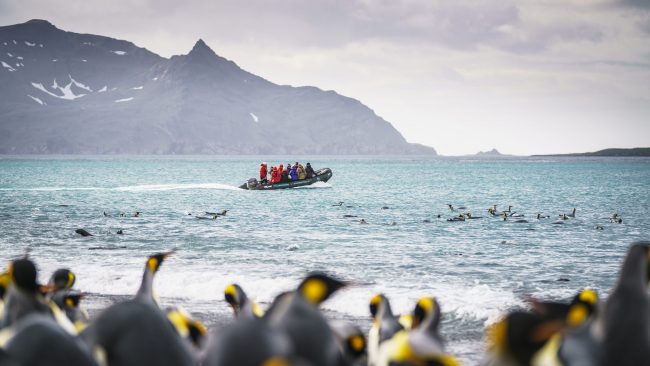
The other difference in the use of the two terms is that ‘Antarctic’ can be used as an adjective, for example, an Antarctic rock, or some Antarctic ice. The term “Antarctica,” on the other hand, can only refer to the proper name of the icy continent surrounding the South Pole.
Not sure what kind of animals to expect to see in Antarctica? Let me tell you. Many of the animals you might see on your trip are not solely land animals. There are three main animals to expect to see while on your trip. Seals, whales, and of course, penguins. There are different types of each species to see. If you are interested in learning more about traveling to Antarctica, take a look at our Antarctica Travel Guide!
Let’s start with seals. There are four different seal types at Antarctica: leopard, crabeater, Weddell, and southern elephant. Most are nonchalant around humans, although leopard seals have been known to get aggressive toward smaller boats. Attacks are not common, but it is best to steer clear of getting close to them. Seals are carnivores and tend to eat fish, squid and krill. Although leopard seals will eat penguins and sometimes other seal species. Seals have adapted eyesight that helps them see underwater which helps when they are diving to deep depths, as deep as 600 meters.
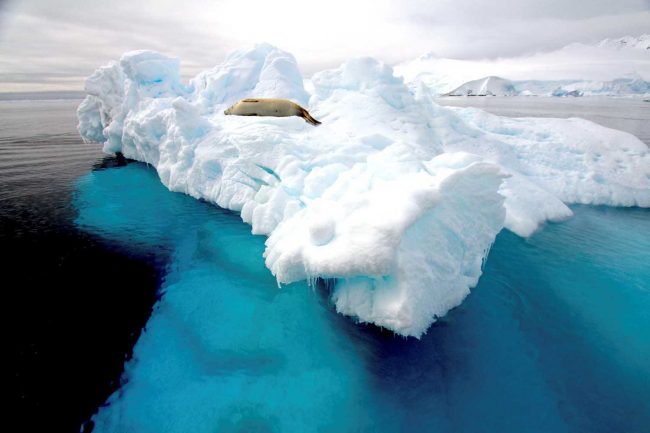
Now, depending on time of year, you will see a few different whales. The most common is orca whales (also known as killer whales). They are the most aggressive in the whale family, yet are not known for attacking humans, especially in the wild. They tend to stick to fish, squid, and plankton. But did you know that orca whales are actually part of the dolphin family? They are the largest of the dolphin family and most people do not know they are not actually in the whale family. Other whales you may expect to see are the blue whale, humpback, and the fin whale. Most whales will be around during the austral summer, which is from December to February.
Blue whales are absolutely massive, averaging about 88 feet long, but can reach up to 110 feet and can weigh up to 150 tons! That is 300,000 pounds! Like the blue whale, the humpback is also a baleen whale but sizes in significantly smaller. The humpback is on average about 62 feet long and 53 tons. This species migrates thousands of miles every year to escape winter waters and feed. They also have the most complex of whale songs, and they have a wide variation to them. These calls can be heard for miles by other underwater species.
The fin whale is the second largest of the whale species and weighs in around 80 tons, and about 65-80 feet long. Like most whales they are migratory and travel north from the Antarctic toward tropical waters, generally steering away from coasts in effort to stay undetectable. Sadly, this species is on the endangered list due to whale hunting that took place until the last century.
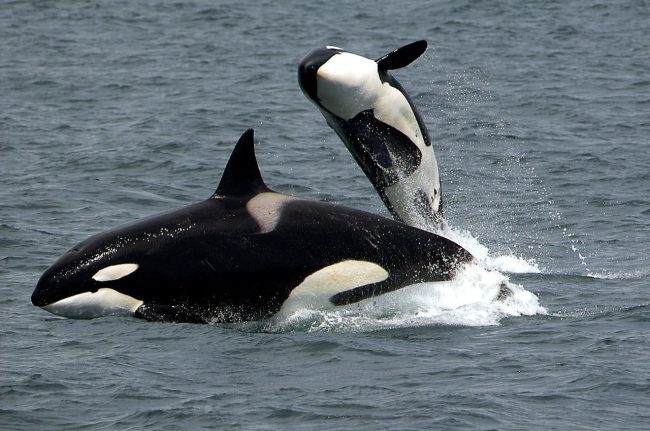
The next most observed species in Antarctica are penguins. There are more than seventeen species worldwide, but only seven found in the Antarctic. Penguins are not known to become aggressive around humans, and sometimes even wander close to you. However, it is best to remain cautious as they can and do bite if they feel threatened. The first of these species is called the Adélie, which remain on the continent all year long. It is extremely hard to tell the males and females apart from one another, as there are few clues to indicate their gender. These penguins are considered egalitarian, which means both parents take equal care of the offspring.
The next penguin species is the largest of all — an Emperor, coming in at four feet tall and weighing up to 100 pounds. That is the size of a small human! Emperors are also known to breed on sea ice and almost always live their lives without ever going onto land. Fascinating! They have a tight knit community and gather in large groups to stay warm in the colder months.
The next species is a Chinstrap penguin. These penguins get their name from their unique markings that look like a helmet chinstrap. They are also one of the most dramatic of the species when it comes to mating. They will sometimes force other penguin couples out of their nests if they cannot find a place they like for their own nest. They will move on after five days if their original mate does not show up, but the female penguins will also fight for the males’ attention if there is more than one.
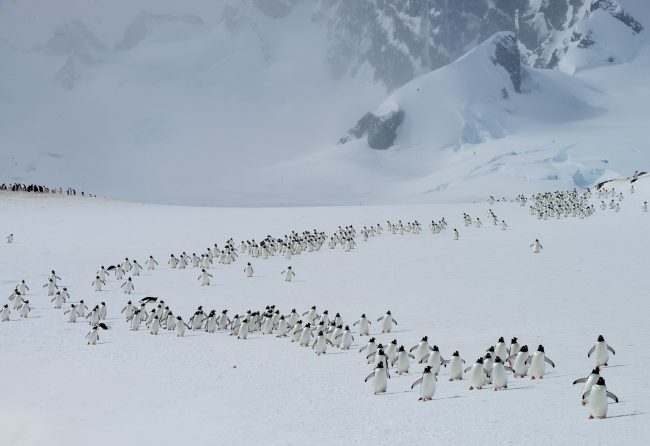
Gentoos are the next penguin species and they are speedy. They can reach speeds up to 22 miles an hour when diving, and that is fast! This species also spends most of their days hunting small ocean fish and although they are larger than most penguins they are still quite small compared to the emperor. King penguins look similar to emperor penguins in their markings, but they are a much lighter black compared to all other penguins, they look more grey than black. This species also spends most of its time in northern Antarctica and only part of the year there. The Macaroni penguin also lives on Antarctica part of the year but do make their way to some of the surrounding islands. Macaroni’s are fairly small and one of the most common species of penguins. They have small markings on their eyebrows, which are similar to other penguins but instead of yellow they are orange.
The last species of penguins are the Rockhoppers. As their name suggests they move around by jumping from rock to rock in the Antarctic. They also have short spiky hair that goes to the base of their head and sticks out on the sides. It is fairly crazy to see, especially when the common person thinks of penguins they think of the gentoo or king and how they look, when most of the species actually have spiky hair, but it looks different on each species.